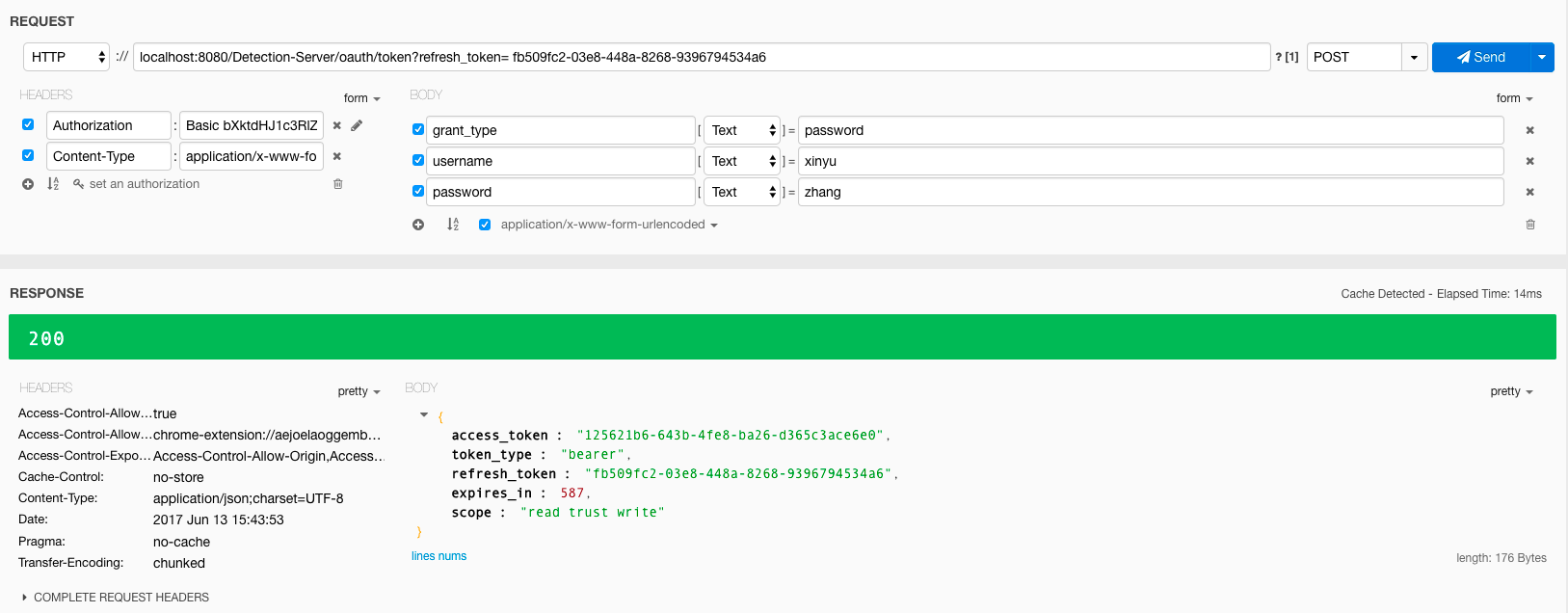问题描述
将Spring-Rest-API-Using-Spring-Security-Oauth2-Example的三个package:config, filter,分别放到现有的Detection-Server项目下(新建三个package),和AuthTokenInfo.java文件放到com.taveen.bean下。运行后报错:

经大师兄指点,报错的关键信息在于:
Spring WebApplicationInitializers detected on classpath: [com.taveen.security.MySecurityWebApplicationInitializer@Sac5d…, com.taveen.config.ServletInitializer@5970…]
意思是项目的初始化配置文件冲突了。需要删除重复的java配置文件(com.taveen.config下的),然后完全通过添加xml配置文件即可将OAuth2集成到现有的Spring MVC项目中。
思路
Spring中添加OAuth2 可能只需要为项目添加配置即可,这个配置可以通过写java代码(上述方式)或配置xml文件。上面的报错是因为,示例项目的package config中的文件(初始化配置项目用)和现有项目中的xml初始化配置冲突了。打算用xml配置的形式(security.xml)添加OAuth2. 然后将这个配置文件security.xml引用到web.xml中。
参考文章
google关键字: spring xml configuration
网上找到的Spring + OAuth2项目代码配置都是类似的,相应地配置xml即可。
二者实现的功能是基本相同的,是OAuth2的两种配置方式。xml版中使用数据库来存储token, java版直接使用in memory的形式存储。
我的测试结果是:
除了com.taveen.security下的MySecurityWebApplicationInitializer.java需保留以外,其他额外添加的java文件都可以删掉,然后加上security.xml的配置,并引入到web.xml中即可。
项目的目录结构
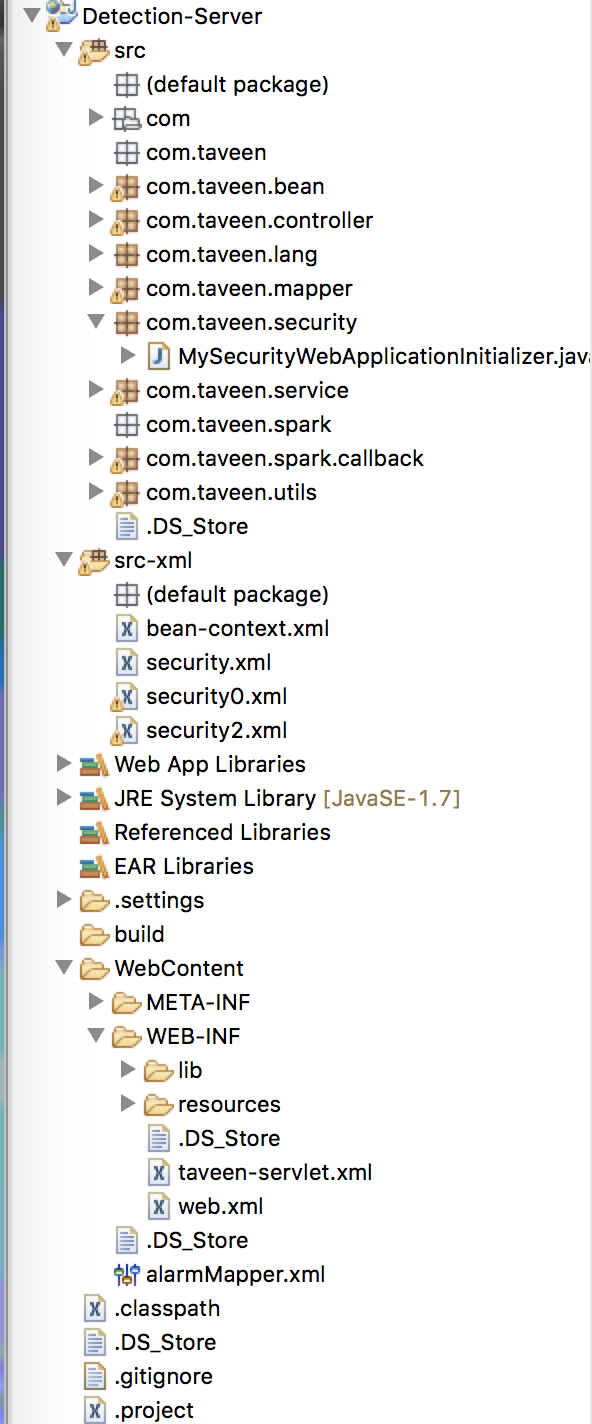
主要配置
web.xml中引入,图中多个security.xml我是为了测试用的,引用一个就行):
|
|
security.xml中的关键代码
1、配置用于客户端POST请求token时填写的username和password,还需要填写的grant_type在下面2中配置:
2、配置客户端的set authorization中填写的username和password和POST请求token所需的grant_type(一般用password):
3、拦截接口设置:
4、token存储方式:
可以像security.xml那样存在内存里:
也可以是像security2.xml(详情见xml版配置文章)那样存在数据库中(JDBC):
实现效果演示
1、客户端选用DHC Restlet Client。set authorization配置如下(意思是访问这个接口需要验证有效token才可以):
2、如果没有带着有效的access_token去请求接口,会返回401:
3、请求token。要访问的接口为localhost:8080/Detection-Server/detection/......
请求token的URL为:localhost:8080/Detection-Server/oauth/token。请求method为POST.
携带的数据以及成功返回的token如下:

由于设置的该token有效期为10min,10min中内再次请求token(带着refresh_token请求)仍会得到这一对access_token和refresh_token,只有expires_in会减少(减到0就过期了)。所以应保存获取的access_token和refresh_token:
4、带着access_token去请求接口数据(注意这里的URL变了:/Detection-Server/detection/...):
/detection/listwatch
/detection/listallclues?p=1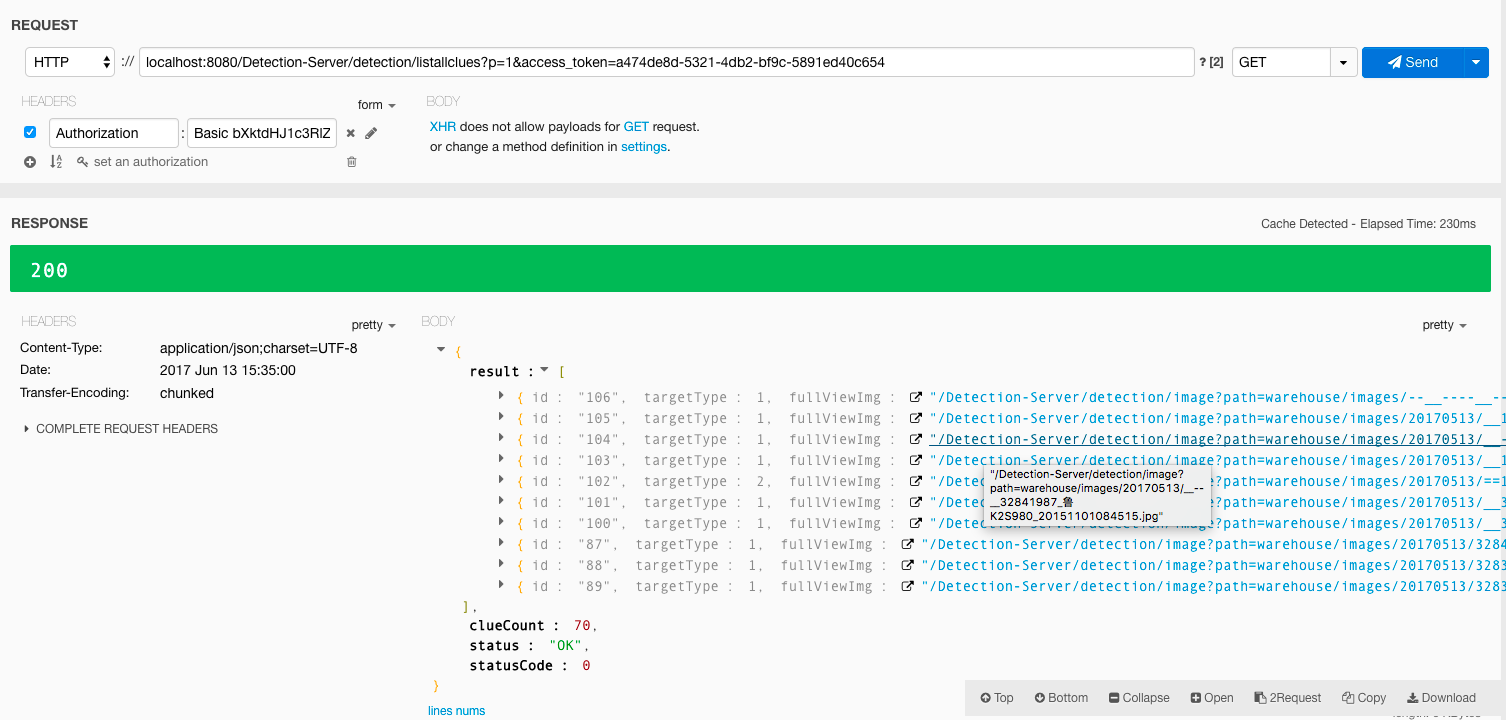
/detection/runningtasks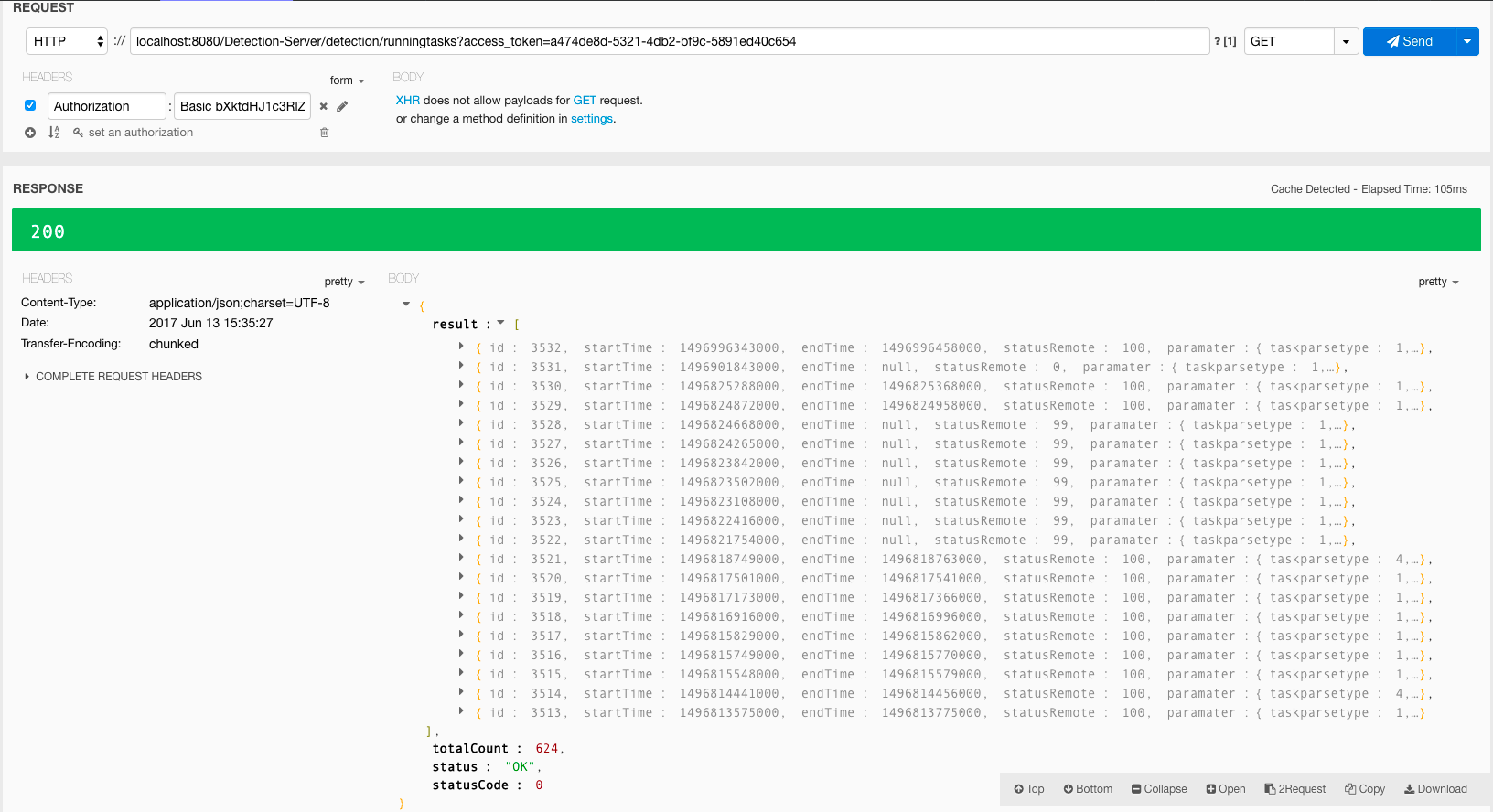
5、带着refresh_token去请求新的access_token:
如果上一个请求的access_token尚未过期,则仍会返回这一对: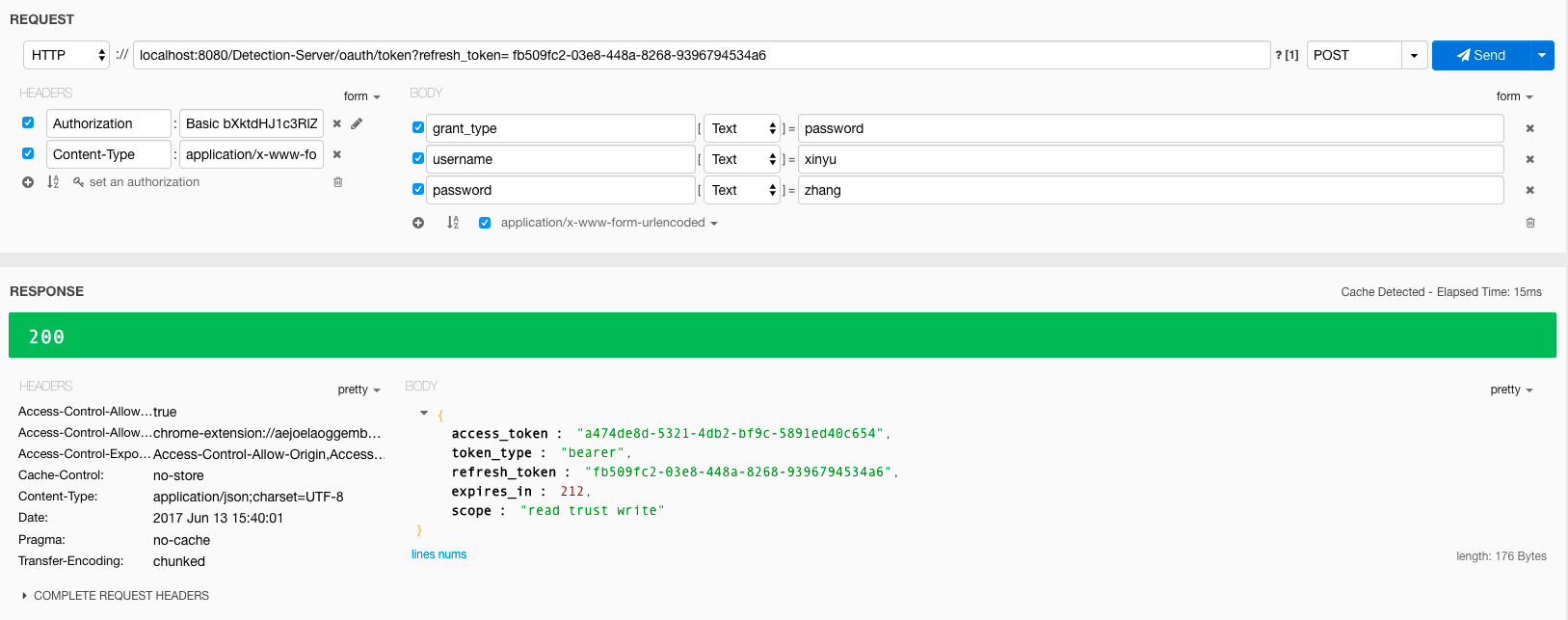
如果上一个请求的access_token已经过期了,就会返回新的access_token: